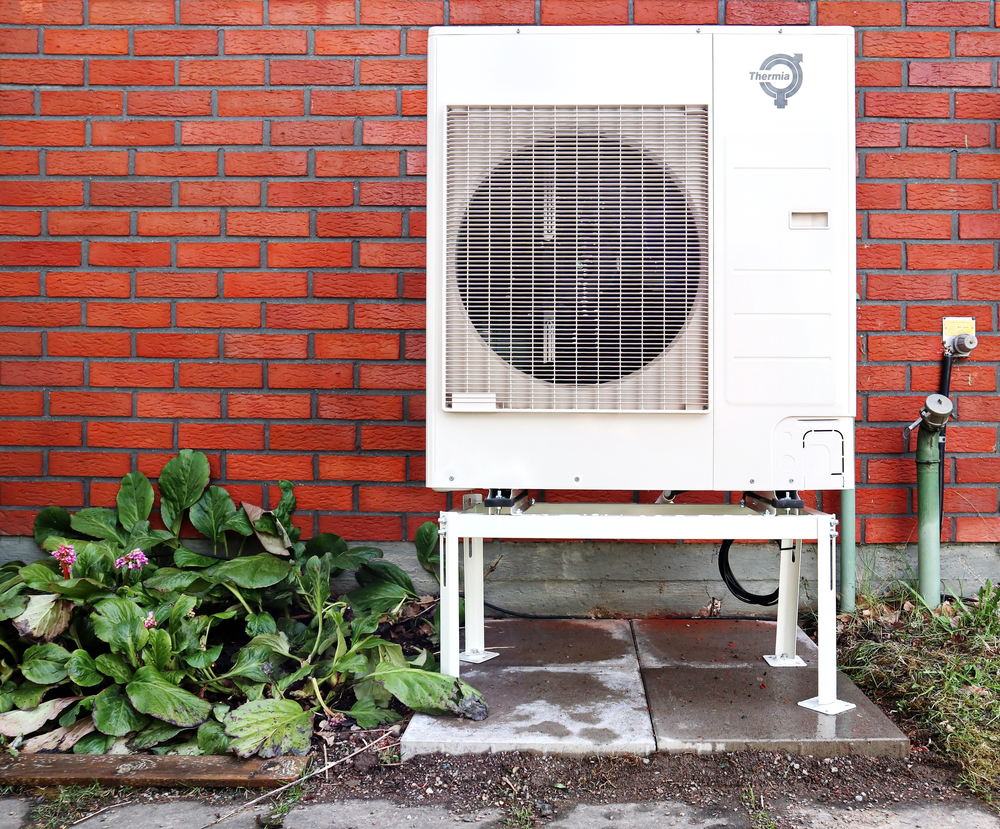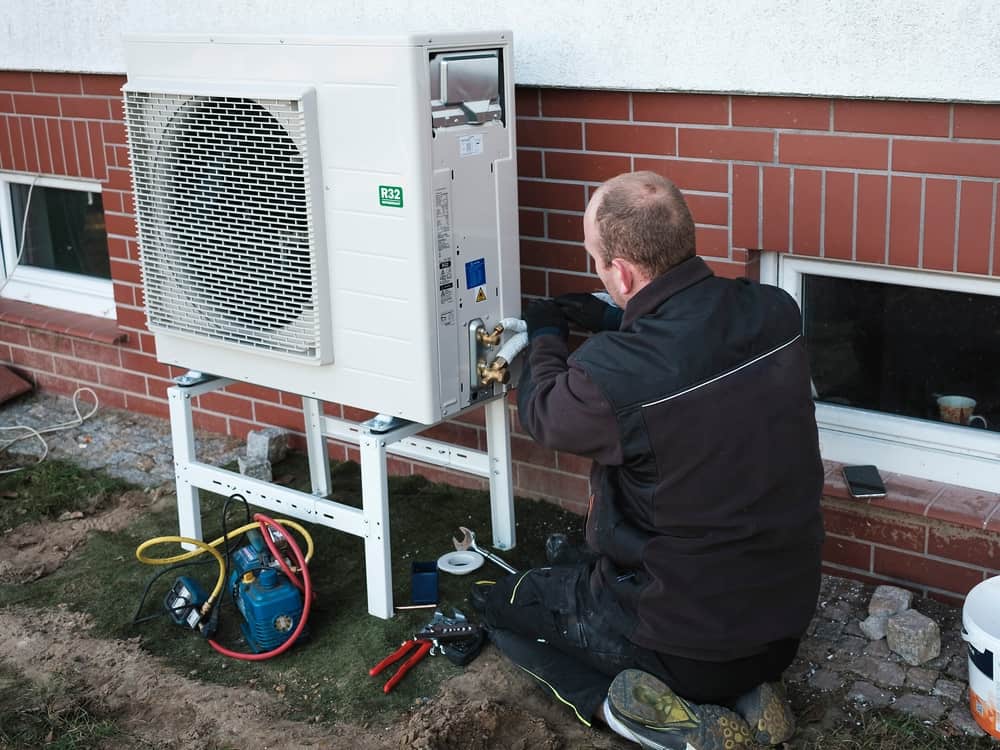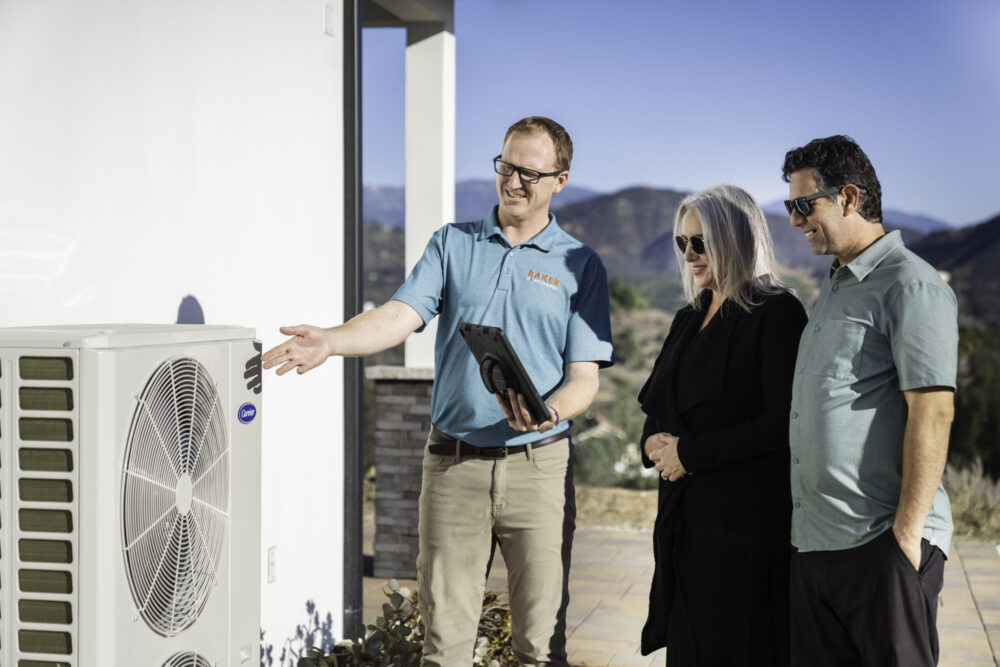
When it comes to heating your home, heat pumps and gas furnaces are both popular options. Each system works differently, and each comes with its own set of pros and cons. While traditional furnaces burn fossil fuels to produce heat, heat pumps use electricity to collect and transfer heat from the air or the ground.
In this post, we’ll take a closer look at the comparison between air source heat pumps vs natural gas furnaces to help you decide the best heating option for your home.
Air Source Heat Pump vs. Natural Gas Furnace: A Comparison
It’s helpful to understand how each of these systems works before comparing heat pumps and furnaces. Let’s look at some of the specifics.
Air Source Heat Pump
An air-source heat pump consists of the following components:
- an indoor unit,
- an outdoor unit
- a refrigerant line connecting the two units
- a compressor
- reversing and expansion valves to change heating and cooling modes

As the outside temperature drops, an air source heat pump absorbs heat energy from the outside air and transfers it to the indoor air. In the outdoor unit, the heat energy is absorbed by the liquid refrigerant and turned into a cold gas.
The compressor applies pressure to heat up the cold gas. When the gas travels into the indoor unit, it is then condensed into warm liquid. As this warm liquid enters the outdoor unit, it is relieved of pressure and cools down to repeat the cycle.
Natural Gas Furnace
The critical components of a gas furnace include:
- a burner
- heat exchangers
- a blower fan
- ducts to circulate hot air
When you increase the temperature on your thermostat, the burners inside your furnace’s combustion chamber ignite and burn natural gas to produce heat. This, in turn, heats up the heat exchanger. The blower fan moving air around the heat-exchanger is what sends hot air throughout your home.
Side-By-Side Features
When you are looking for the right heating solution for your home, the most common worries include installation costs, equipment performance, energy efficiency, maintenance, and life expectancy. Based on these key aspects, here is a side-by-side comparison of air-source heat pumps vs. natural gas furnaces:
| Feature | Air-Source Heat Pump | Natural Gas Furnace |
|---|---|---|
| Installation cost | The upfront installation costs are higher for heat pumps than replacing a gas furnace. However, in the long run, a heat pump generally costs less to operate than a furnace. | A number of factors can affect the cost of installing a natural gas furnace, including the available natural gas lines running to your home, existing ductwork, and your new system’s configuration. |
| Performance | Heat pumps are more likely to work better in moderately cold temperatures. | A natural gas furnace can continue to generate heat in freezing temperatures. |
| Energy Efficiency | Though electric, heat pumps use less energy and heat more efficiently than gas furnaces. An air-source heat pump can provide up to three times more heat energy than the electric energy it consumes. | Natural gas is cheaper than electricity. However, in SoCal’s moderately cold temperatures, gas furnaces are not always cost-effective. ENERGY STAR-certified gas furnaces for the southern half of the U.S. are up to 11% more efficient than standard models. |
| Maintenance | To ensure optimal performance, schedule regular cleaning and inspections for the indoor and outdoor units. | The maintenance requirements of a natural gas furnace are lower than those of a heat pump. |
| Lifespan | Heat pumps are used for both heating and cooling, which increases wear-and-tear. The average lifespan of a heat pump is around 10-15 years. | Natural gas furnaces have a few motorized parts, used only during colder months. As a result, natural gas furnaces can last beyond 15 years. |
In Southern California where winters are milder, a gas furnace can produce extreme heat to reach the temperature set on your thermostat quickly. This can result in uneven heating and leave cold spots around your home. The hot air from the furnace can also lead to dry skin.
Furthermore, natural gas furnaces put your life as well as your family’s lives at risk from dangerous carbon monoxide (CO) leaks. This has led to stronger kitchen ventilation standards to improve indoor air quality in all new buildings using natural gas furnaces. More than 40 cities and counties across the state have tightened rules, with some banning natural gas usage in new homes.
Because California aims to eliminate statewide carbon emissions by 2045,
the California Energy Commission is phasing out natural gas furnaces,
which account for 10% of greenhouse gas emissions.
Given these health, safety, and environmental concerns, electric furnaces would seem to be the preferred source of heat over natural gas furnaces. The upfront cost of installing an electric furnace is less than installing a natural gas furnace, and electric furnaces are quieter and more durable than their gas counterparts.
However, electric heating is inherently inefficient, resulting in higher energy bills. This is why an air-source heat pump is your best option for cost-effective and efficient heating in the SoCal region.
Partner with A Heating Expert to Select the Right Air-Source Heat Pump for Your Home
Have you checked the heating efficiency (HSPF) and the cooling efficiency (SEER) for your air-source heat pump? Are you planning to install a ductless air-source heat pump or a ducted one? Should you choose a multi-zone or a single-zone system? Are split-system air-source heat pumps better than the packaged ones?
These are some of the questions that only a heating expert can answer. At Baker Home Energy, we are committed to helping you select the right-sized energy-efficient system. Our team of certified and licensed technicians provides you with free consultations, recommends the most trusted brands, and guides you through pricing, warranties, and financing options. As highly experienced heating and cooling professionals in the SoCal region, we not only install the system that fits your home’s heating requirements but we also ensure its proper maintenance and repair.




